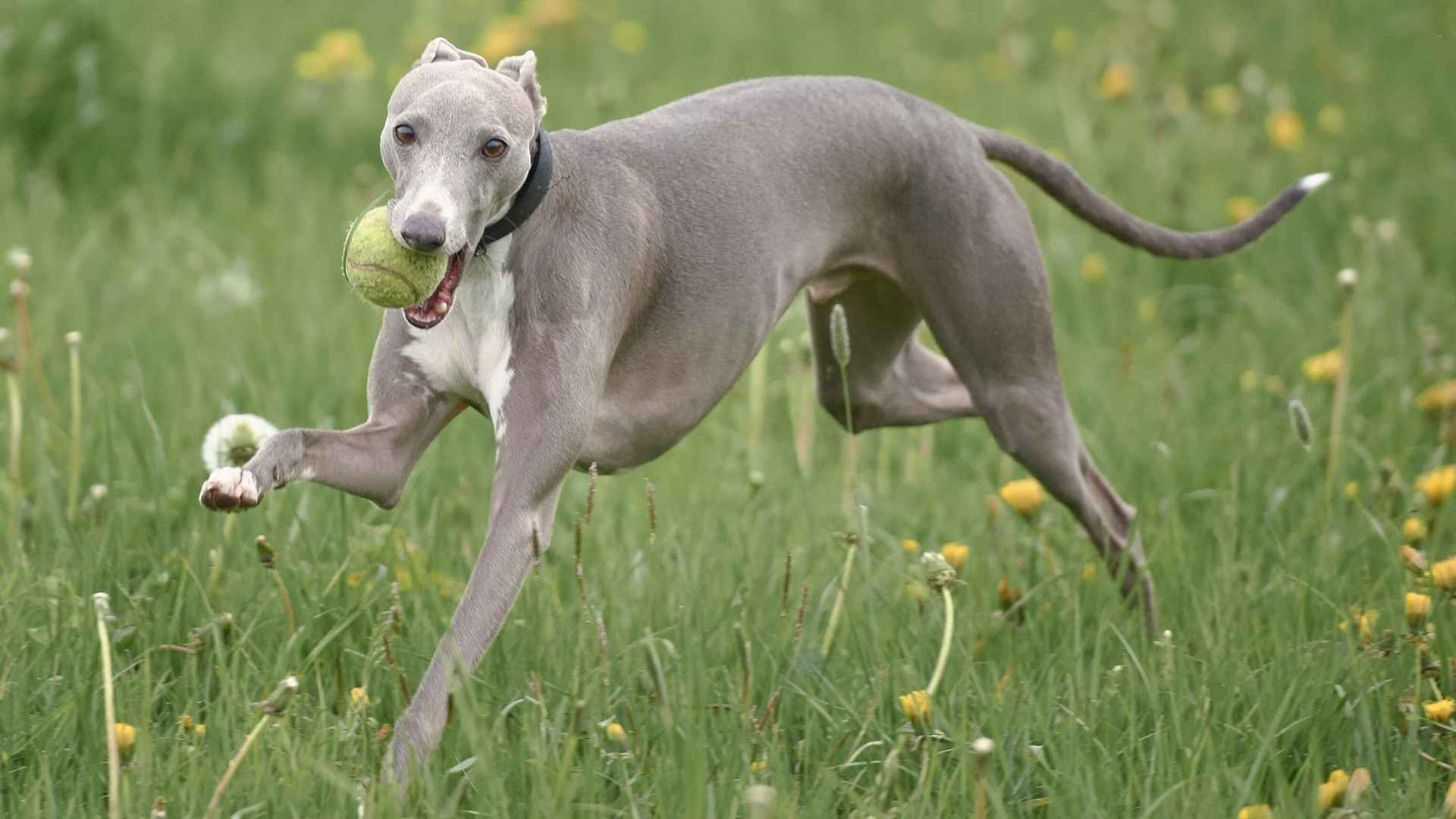Deep-chested dog breeds are known for their distinct body shape, narrow waists, long legs, and broad, deep ribcages that extend down towards the elbows. This unique build tells a lot about the dog, because such dogs are athletic, fast, and full of stamina.
Having a deep chest space means that these dogs have stronger lungs and large hearts that support high energy levels. However, it does come with its own health risks, such as bloat, which is a life-threatening condition in which the stomach twists.
Owners of such dog breeds must be careful with their feeding schedules, exercise timings, and watch out for early signs of distress. Despite the risks, these breeds offer invaluable services and are brave, loyal, and intelligent. All these qualities make them excellent companions for active families who can understand and fulfil their physical and mental needs.
Let’s find out more about the seven deep-chested dog breeds that made it to the top of our lists!
Deep-Chested Dog Breeds
1. Greyhound
The Greyhound is one of the most iconic deep-chested dog breeds, bred for speed and hunting. The sleek body, long legs, and aerodynamic frame help them reach speeds up to 45 mph, making them one of the fastest breeds in the world.
Their deep chests house strong lungs and a sturdy heart that support incredible bursts of speed. Despite their racing background, they are pretty low energy indoors and often referred to as ‘couch potatoes.’ They are usually content with a couple of running sessions and then lounge for the rest of the day.
Their gentle and quiet nature makes them excellent pets for calm households. Greyhounds are sensitive dogs that respond well to kind, consistent training. Their slim build makes them elegant but also sensitive to extreme temperatures. They have to wear an extra layer of clothing in winter.
2. Whippet
The Whippet is the smaller, deep-chested cousin of the Greyhound, built for speed and grace. They are incredibly agile and can reach speeds up to 35 mph. Often called the poor man’s racehorse, this breed was once used for chasing rabbits and racing in open fields.
Today, Whippets are quick to sprint but relaxed indoors, often curling up on the couch and relaxing for most of the day.
They are calm and gentle by nature, get along well with children, and usually do fine with other pets. Short play sessions and walks are enough for them to be happy.
Whippets can be prone to bloat because of their deep chests, a disease in which the stomach twists and the blood flow is cut off. So, it is best to feed them in smaller portions and avoid active play right after meals.
3. Saluki
The Saluki is one of the oldest dog breeds in the world, known for its slim body, long legs, and deep chest. The special build helped them run fast across deserts where they used to chase animals like gazelles.
They are not loud or overly playful and enjoy being close to their favorite person. They are often shy with strangers, yet polite. They like peaceful homes and don’t need constant attention. A safe, fenced area where they can run freely is great for them, along with daily walks to keep them healthy.
Their fine coats shed lightly, so a quick brush here and there keeps them looking sleek. As per Chewy, they need soft bedding that keeps their light frame comfy, and indoors is best for them to be safe from extreme temperatures.
4. Afghan Hound
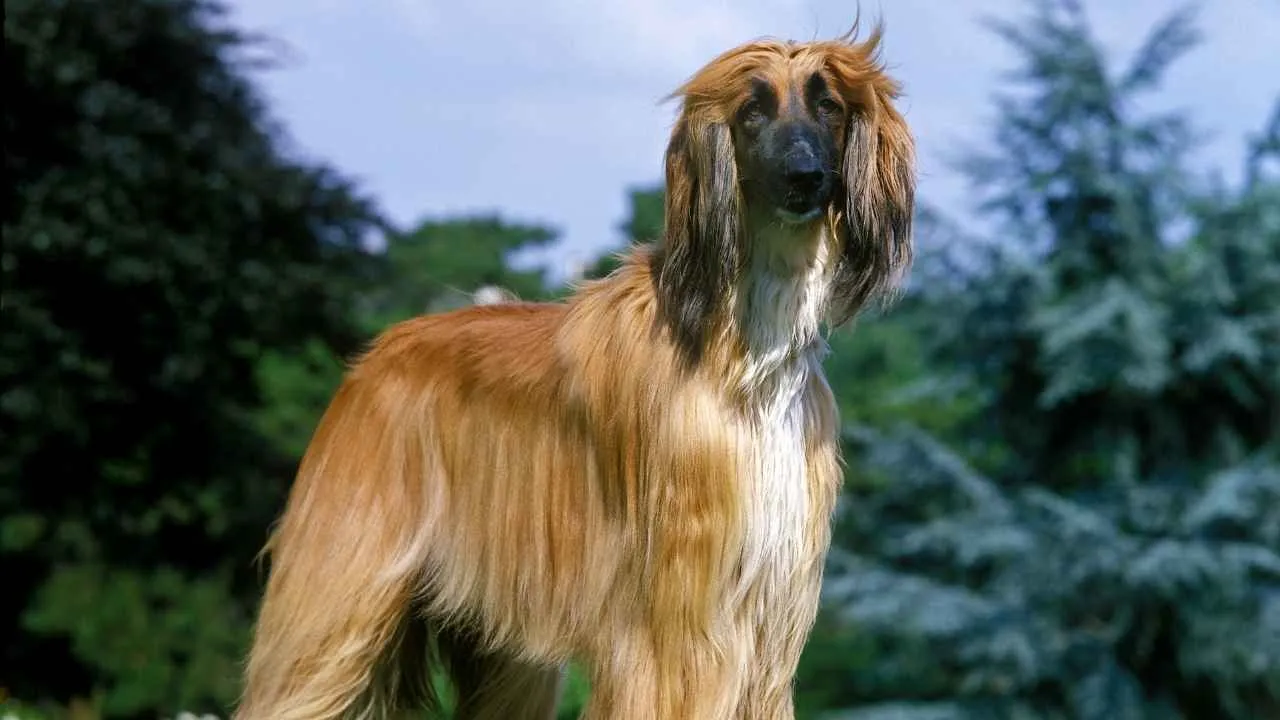
The Afghan Hound is known for its long, flowing coat and elegant look, but it’s also a deep-chested sighthound built for speed. The breed was originally used in the mountains of Afghanistan to hunt fast animals over rough terrain. They look pretty fancy and sleek, but they are tough and athletic dogs.
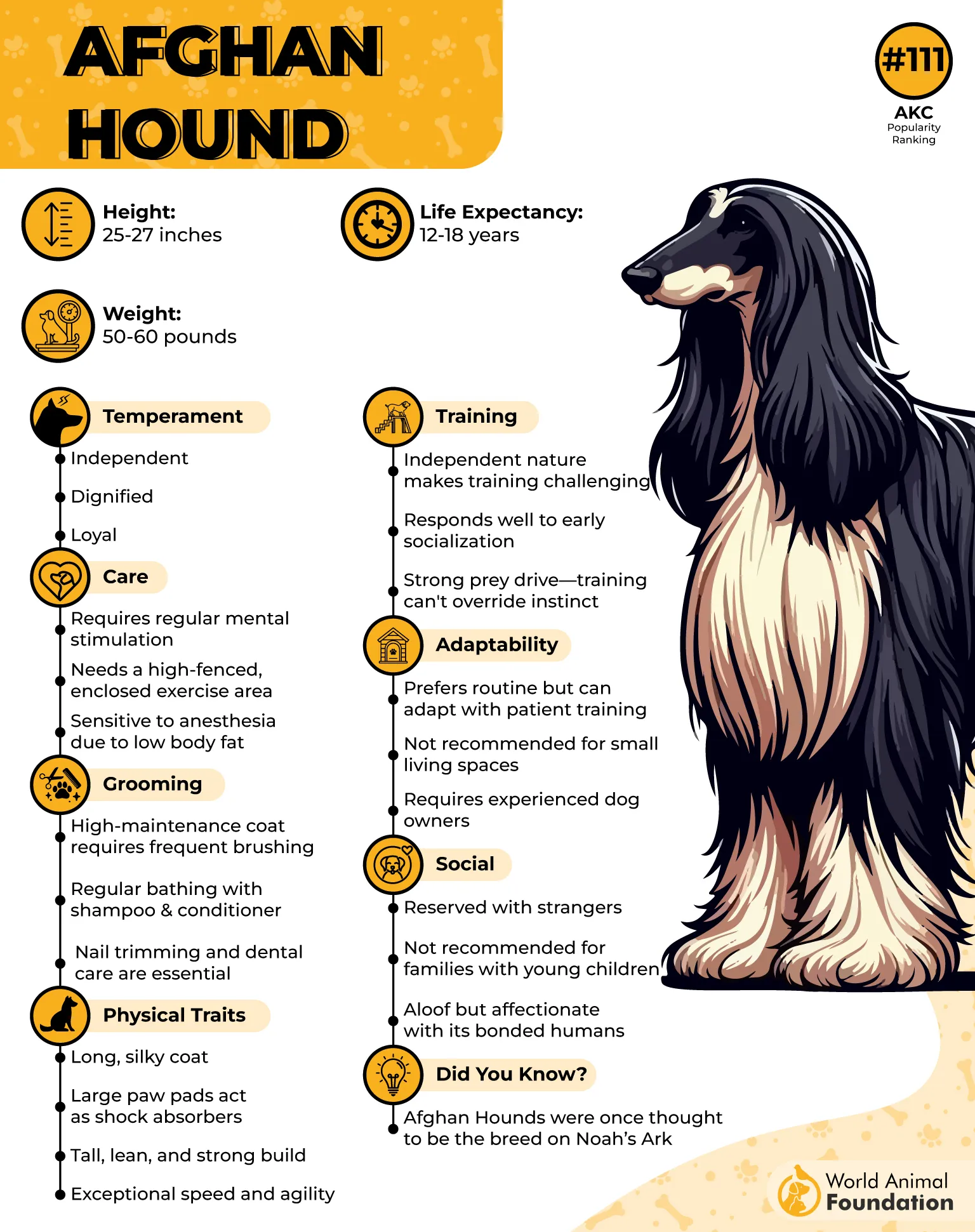
They have a quiet and aloof temperament. They are loyal and affectionate with people of their choice, but not too clingy, and do not seek attention. They are suited for calm homes. Because of their hunting background, they chase small animals, so it’s best to keep them on a leash in a fenced yard.
Their silky coats need regular maintenance to keep them clean and tangle-free. According to WebMD, it is important to give them smaller meals and avoid strenuous exercise around meal time, as there is a higher risk of bloat when a dog’s stomach fills with food.
5. Borzoi
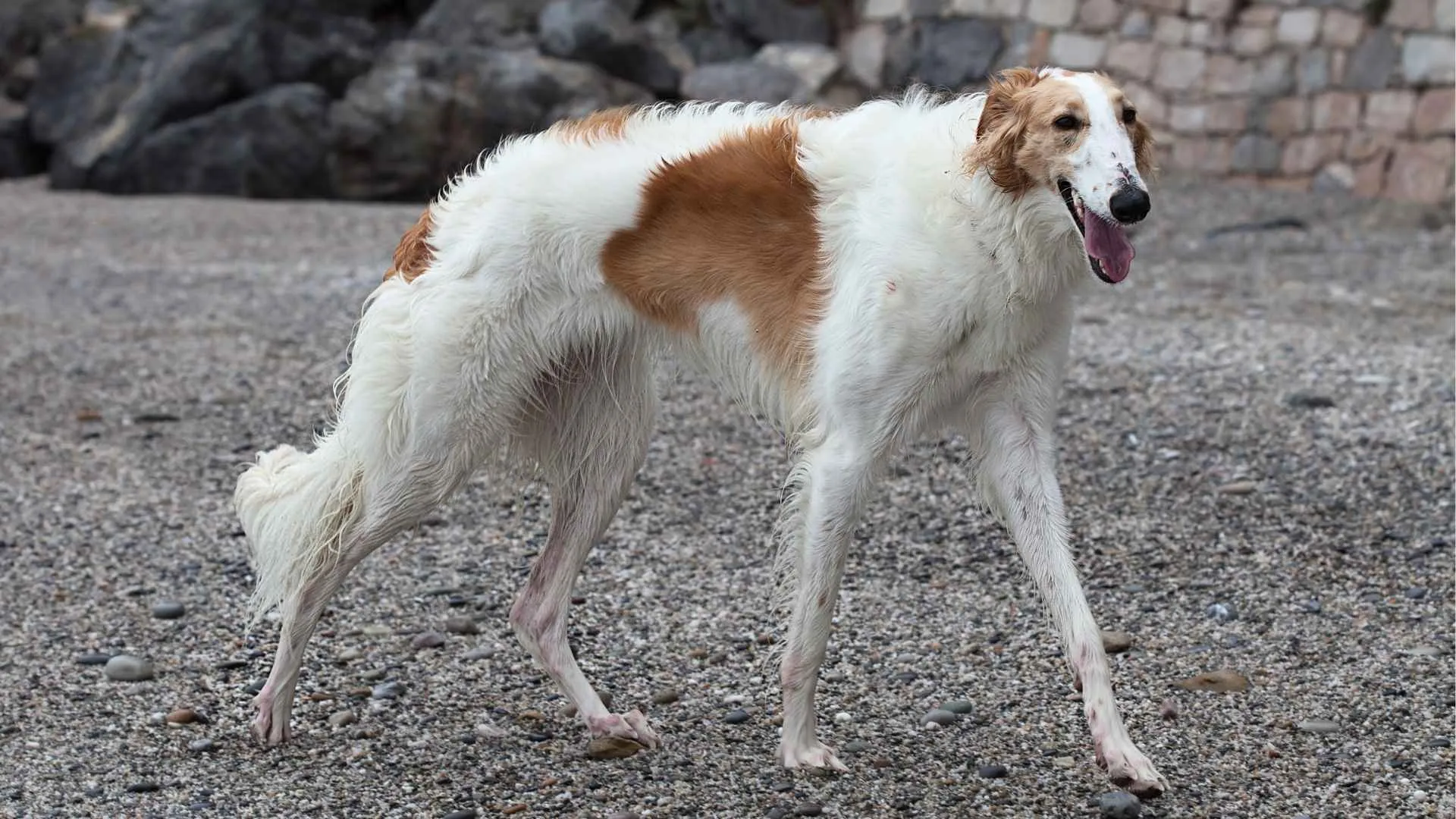
The Borzoi is a tall and elegant dog with a long, narrow body and a deep chest that helps it run fast and breathe easily. Also called the Russian Wolfhound, they were used to hunt wolves, so they naturally have speed, stamina, and focus.
They are gentle and sensitive dogs who enjoy relaxing in quiet spaces. They have a dignified persona, often reserved with strangers but loving with family. Without proper early socialization, they are not suitable for homes with other pets.
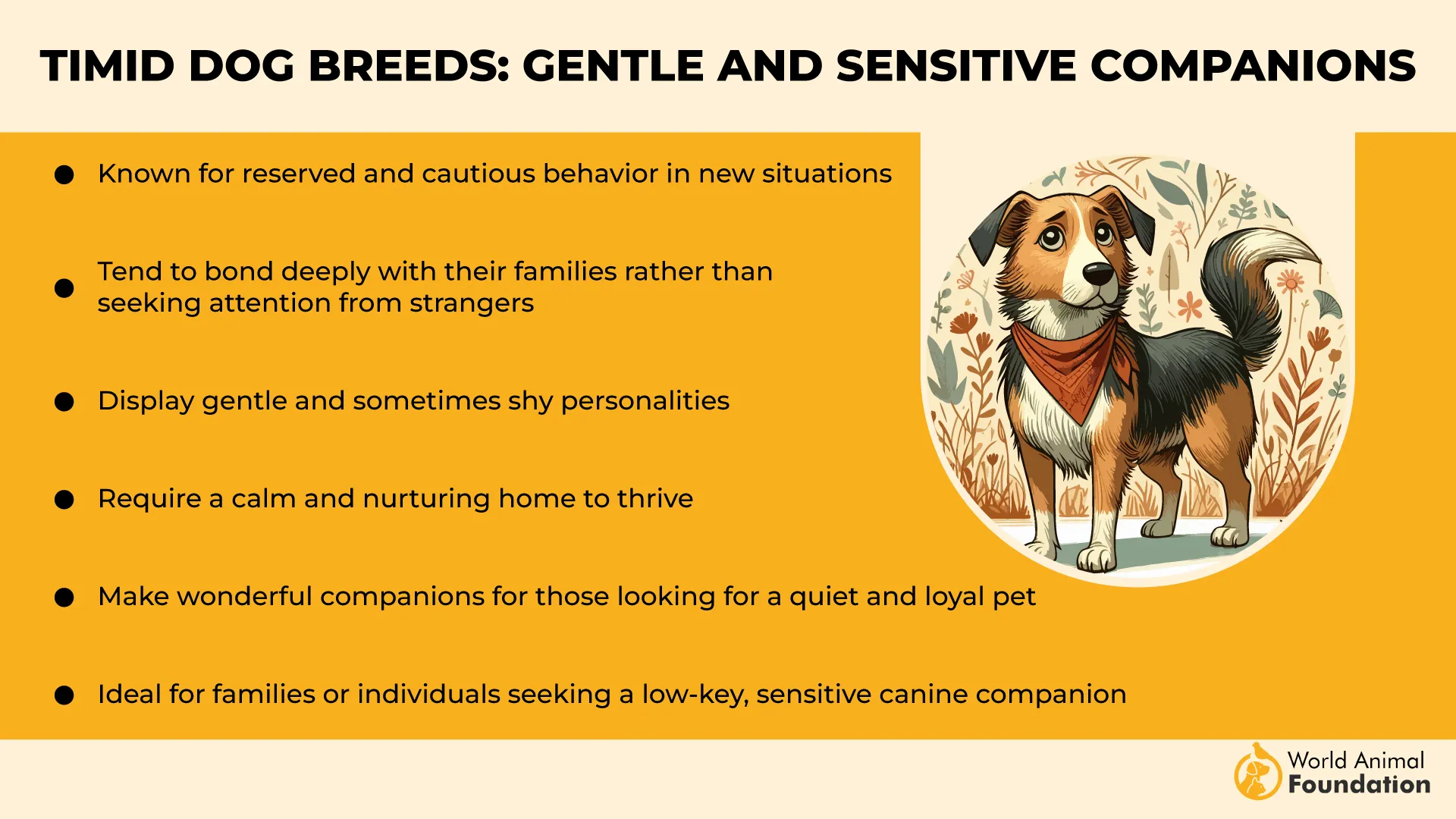
They do not need much exercise daily, but they do like to stretch their legs and run a couple of times a day, so they are better suited for homes with large yards.
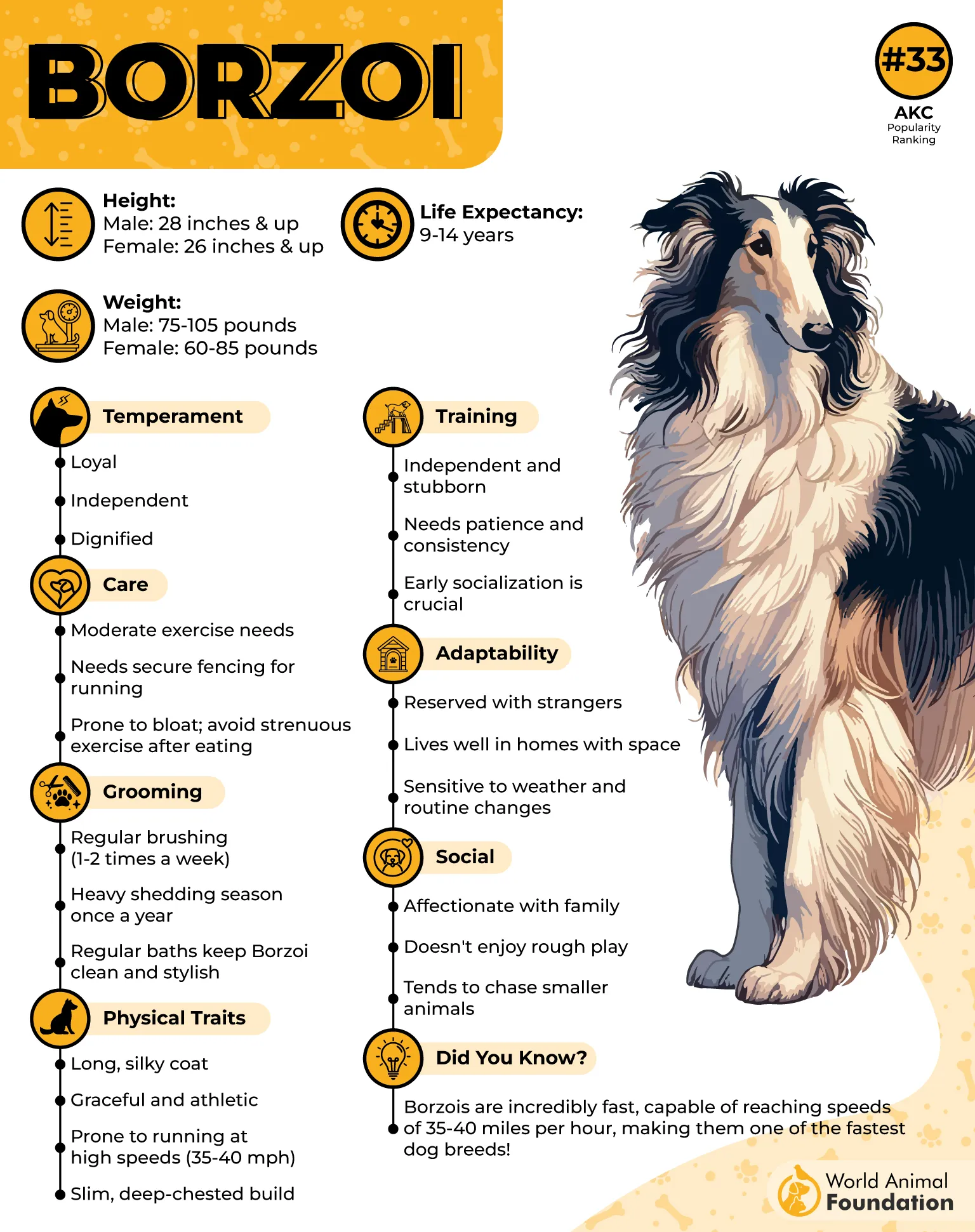
Borzois have always hunted in packs and have an adventurous past, which means they get bored easily. Training them with positive reinforcement methods proves helpful in raising them as good pets. Owners must always watch out for signs of GDV and take prompt action in unfortunate circumstances.
6. Irish Wolfhound
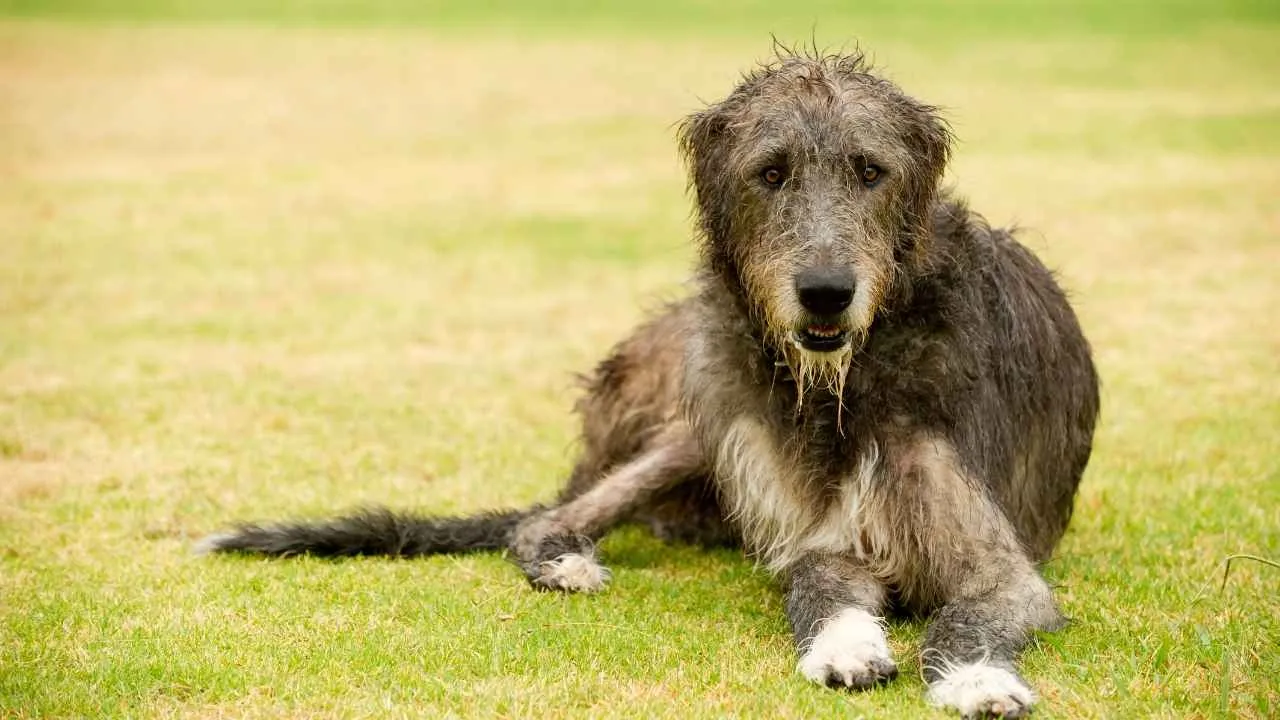
The Irish wolfhounds are one of the tallest dog breeds in the world, often standing over 32 inches at the shoulder. They were bred in Ireland to hunt wolves and protect properties. Like all sighthounds, they must always be kept on leash as they can chase small animals and have a bad recall once engaged.
Their huge size is often intimidating for animals and people, but they are not protectors. As they take up a lot of space, it is important to keep things like the size of your house and car into consideration before owning an Irish Wolfhound.
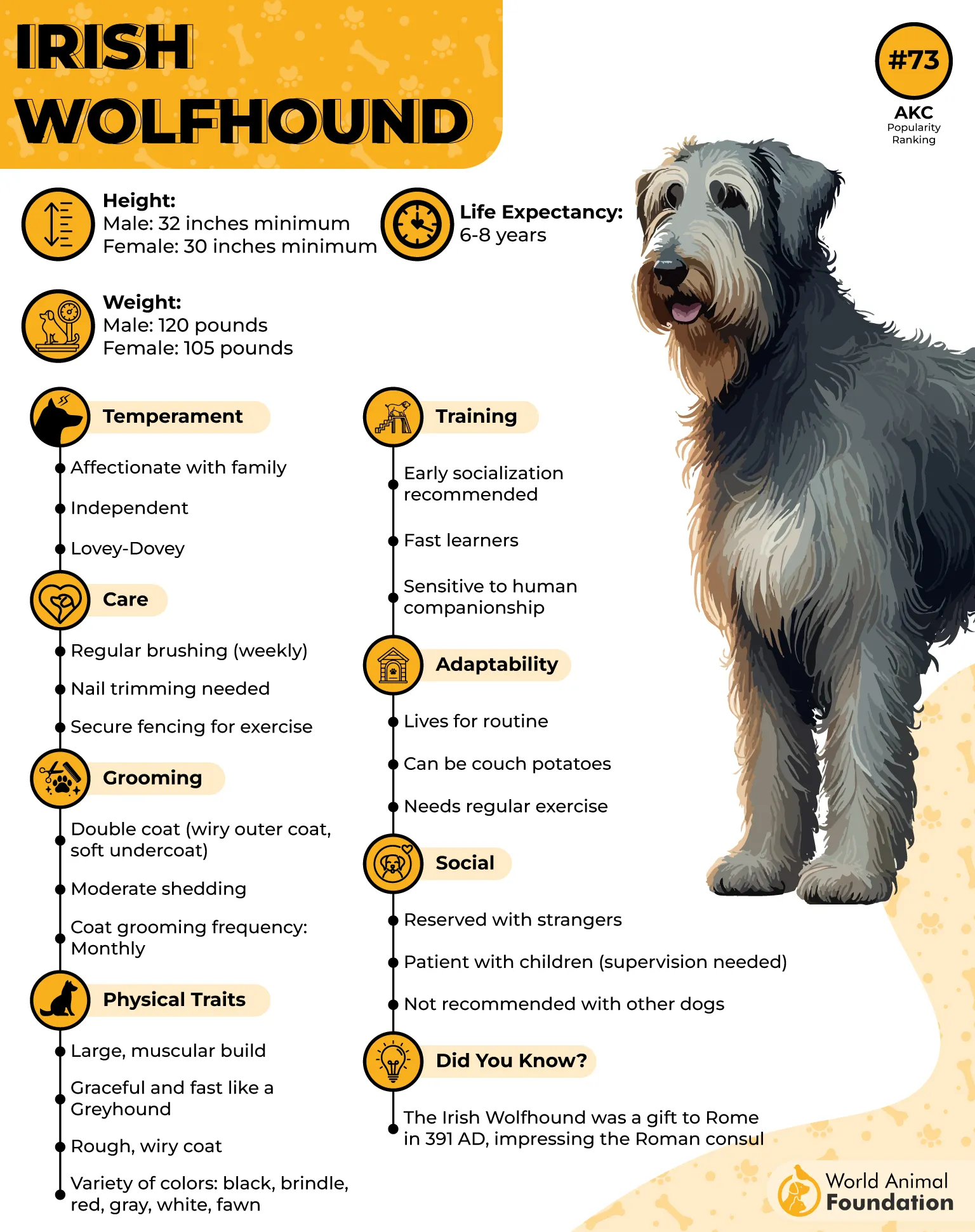
They do not have high grooming or exercise needs. Long walks, quiet time with family, and a place to rest are enough for them. Often called ‘gentle giants’, they are great for households with children and coexist with other dogs and animals peacefully.
As per PetMD, they are at an increased risk for a handful of diseases, including GDV, hip and elbow dysplasia, and bone cancers. Pet parents benefit from investing in good pet insurance.
7. Doberman Pinscher
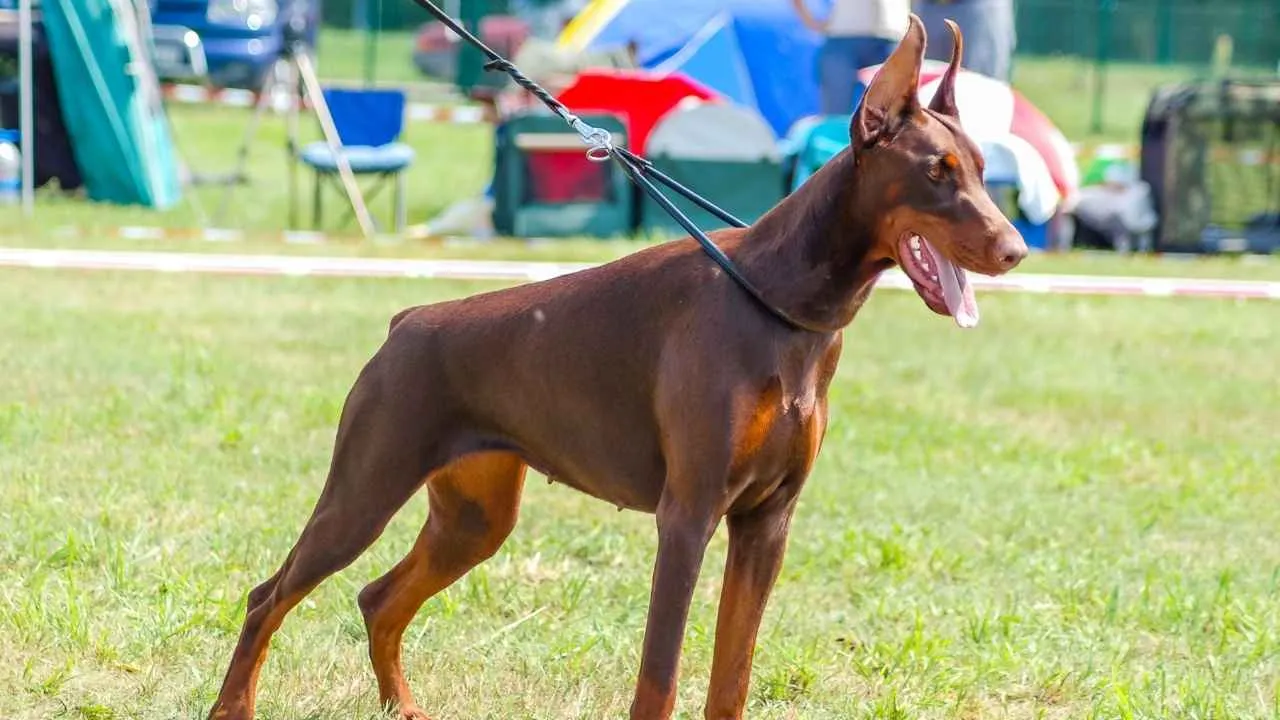
The Doberman Pinscher is a sleek and powerful breed that is known for loyalty, alertness, and significant contributions in working roles such as protection, police, and military roles.
Their famous upright posture is well supported by the deep chest, which not only supports vital organs, it also helps the breed stay active and perform with stamina during intense tasks.
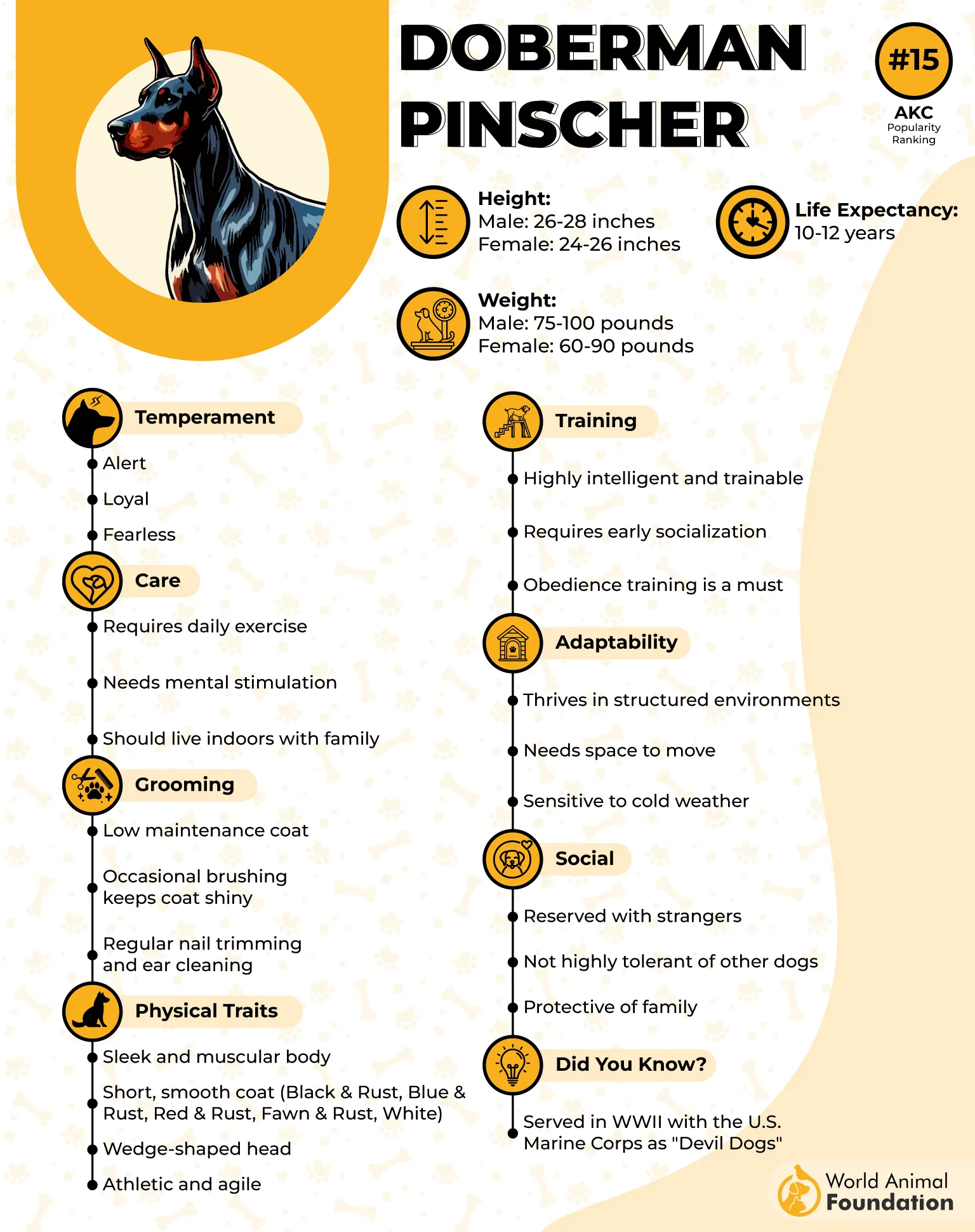
They are excellent guard dogs and companions for people who enjoy structure and training. They look tough, but bond really well with families and are sensitive and eager to please. They thrive on mental stimulation and need daily exercise like brisk walks, playtime, or obedience training. They become restless and bored without enough attention.
Their deep, narrow chest means that they need extra care around meal times. Two or three smaller meals in a day with some dry food is better than one full meal, which reduces the chances of gastric dilatation volvulus and supports overall health.
Conclusion
A dog’s chest shape plays a great role in how it moves, breathes, and performs certain activities. Deep-chested breeds like the Greyhound, Doberman pinschers, and Borzois are built for speed, stamina, and athletic performance. Unlike barrel-chested dogs with wide ribs, their narrow yet deep chest cavity gives them powerful lungs and strong hearts, making them excellent runners and working dogs.
But, this same structure can put them at certain health risks like bloat, so it is important that owners are well aware of the feeding patterns of such breeds and how exercise affects a dog’s well-being.
Whether your dog is built for speed or strength, paying attention to how their body works is key to keeping them healthy and comfortable for years to come.


